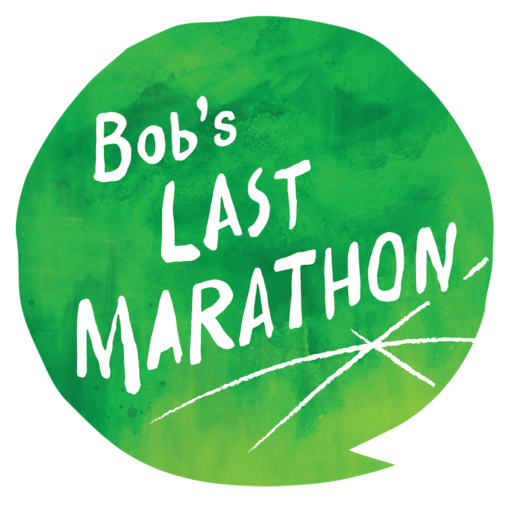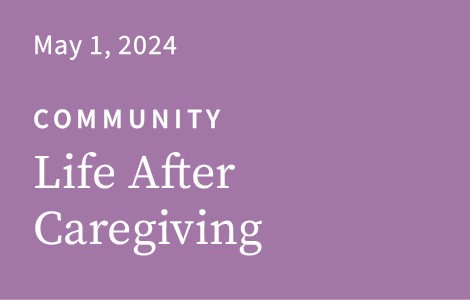Transcript
Life After Caregiving
Katie Brandt: Hi, I’m Katie Brandt, Director of Caregiver Support Services and Public Relations for the Frontotemporal Disorders Unit at Massachusetts General Hospital. I am here today with Judith Johanson, a member of the Alzheimer’s Disease Research Center at Massachusetts General Hospital, to share a conversation about life after caregiving for our husbands. Throughout this conversation, Judy and I will explore what drew us to stay connected with the field after our journeys of care, the balance of grief and joy, and how love is the bridge from so many yesterdays to brand-new tomorrows.
Judy Johanson: In Guy Clark’s song “Magnolia Wind” he speculates about how he might feel if his love were ever to leave him. He sings, “If I can’t dance with you, then I won’t dance at all, I’ll just sit this one out with my back to the wall.” He continues: “I’d rather die young than to live without you, I’d rather go hungry than to eat lonesome stew.”
After I lost Steve back in 2018, these lyrics played over and over in my head.
Would I dance again if I couldn’t dance with him? How could I live without him? Where would I find moments of love, joy, and connection? Was there a new untold purpose for me to pursue? How would I evolve from being a caregiver to living life after caregiving?
Katie: One of the most persistent themes along my journey of caregiving has been connection. In the final months of Mike’s life, I would sit next to his bed and share stories about our preschool-aged son, Noah, or reminisce about the early days of our courtship and marriage. When my mind grew too weary to conjure up another memory, I found a new pathway for connection by reading aloud from the Harry Potter books. Mike and I had a shared love of the series, enjoying J.K. Rowling’s depiction of a magical world that held the human experiences of friendship, love, and grief at the center of the story arc. After Mike’s passing in 2012, I thought often of the line spoken by Harry’s wise headmaster, Albus Dumbledore: “To have been loved so deeply, even though the person who loved us is gone, will give us some protection forever.” I hoped for this to be true, that Mike’s love might have left behind a cloak of protection to cover up the scars caused by years of grief.
Judy: Providing care for someone who has Alzheimer’s is like participating in an endurance event. There is physical and emotional exhaustion, and little time to think about giving up. I found purpose by knowing I was fulfilling our vows by being the steward of Steve’s care. So when he breathed his last breath, relief came with the knowledge that this arduous journey had come to an end. A hard stop. There was guilt that accompanied that relief. Finding ways to balance these conflicting emotions can be complicated. In my mind, the words in Guy Clark’s song evolved into a moral question. How could I want to die young, while there was still so much to live for?
Katie: In the fall of 2013, a year after Mike’s passing, when Noah stepped on the bus to kindergarten, I knew it was time for me to step back into the workforce. I noticed that the passage of time had allowed my thoughts to shift. Instead of waking up each morning wondering how I would make it through the day, I was beginning to feel curious about the next direction my life could take. Even though my role as an FTD caregiver had ended, I felt drawn to return to the FTD community. I thought of my experience as a young caregiver, marked with so many lonely moments, and I was determined to make the road easier for others to travel. I wanted my story to be a bridge to connections for others. This led me to reach out to the Association for Frontotemporal Degeneration as a volunteer and to apply to work as a community resource specialist in Massachusetts General Hospital’s FTD Unit. I felt empowered because this time I was a part of the FTD community by choice. In these new roles, I counseled families, spoke as an advocate on the state and national level, and raised my first $100,000 for FTD research. What began as an entry-level part-time position turned into today’s full-time leadership role as Director of Caregiver Support Services and Public Relations.
Judy: On the career front, our Alzheimer’s journey has provided me a path of sustainability by way of working at the Massachusetts Alzheimer’s Disease Research Center as a program coordinator. I work with individuals with various types of dementia as well as healthy individuals enrolled in our long-term study. I am a liaison to families and individuals who are considering brain donation to our center. I offer peer-to-peer support to caregivers and am a co-facilitator of support groups for people enrolled in clinical trials. And I serve on the Board of Directors for the Alzheimer’s Association. In my work, I’m able to take what I have garnered through the years and walk with others who are on a similar trajectory while supporting brilliant scientists and clinicians in their quest to find answers—therapies, cures, and prevention strategies for Alzheimer’s and other related dementias. I find purpose by being invited into people’s stories, and being able to extend a hand of camaraderie as they navigate the path that Steve and I did.
I certainly have lonesome moments, but conversely, I am keenly attuned to the fact that I am privileged to remain in this life with our family and the legacy that Steve and I created together. Steve would have given anything for the gift of additional time. Knowing this helps me to embrace happiness and to honor what Steve held dear. And research suggests that living happily may enhance longevity. Our grandchildren deserve a nana who embraces happiness.
I try not to dwell on what is lost, but rather to feel gratitude for the abundance of love that remains.
I don’t feel the urge to look for romantic love, like what I shared with Steve. But there is room for love in all its forms in my heart. I am nurtured by the fulfilling relationships I experience with family, friends, and fellow caregivers or others who have walked a similar path. “Lonesome stew” is seldom on my menu.
I am sustained by living and embracing the fruits of love and the fragments of Steve that are peppered throughout my world. I see him in my children, and theirs. I find him in the stars and feel him in the gentle winds.
I move forward with hope and anticipation while carrying the treasures we have amassed from our cherished memories. This helps me evolve. My grandchildren see to it that I never “sit this one out” as they entice me to dance joyfully with them!
Katie: Working in the FTD community provided me with a powerful outlet for the energy that grief had created in my life. Sharing our family’s story helped me build connections and relationships that validated the experiences of other families walking the journey of young-onset dementia. After one presentation at the Alzheimer’s Impact Movement Advocacy Forum, a caregiver approached me with a hug and whispered, “You said everything I felt but couldn’t find the words to say.”
Giving my grief a place of purpose had an unexpected outcome. I found that there was new space in other parts of my life. This allowed me to make plans for fun experiences with Noah, everything from our first trip to Disney World to today’s plans for college tours. My heart became open to new friendships and relationships, and I feel a deep sense of gratitude for the experience I had as Mike’s wife. The greatest surprise was when I realized that grief, love, and joy could exist together in one heart: mine.
Katie Brandt
Director of Caregiver Support Services and Public Relations
Massachusetts General Hospital Frontotemporal Disorders Unit
https://katiebrandt.org
Judith Johanson
Program Coordinator
MADRC Longitudinal Cohort
Gerontology Research Unit
Massachusetts General Hospital

